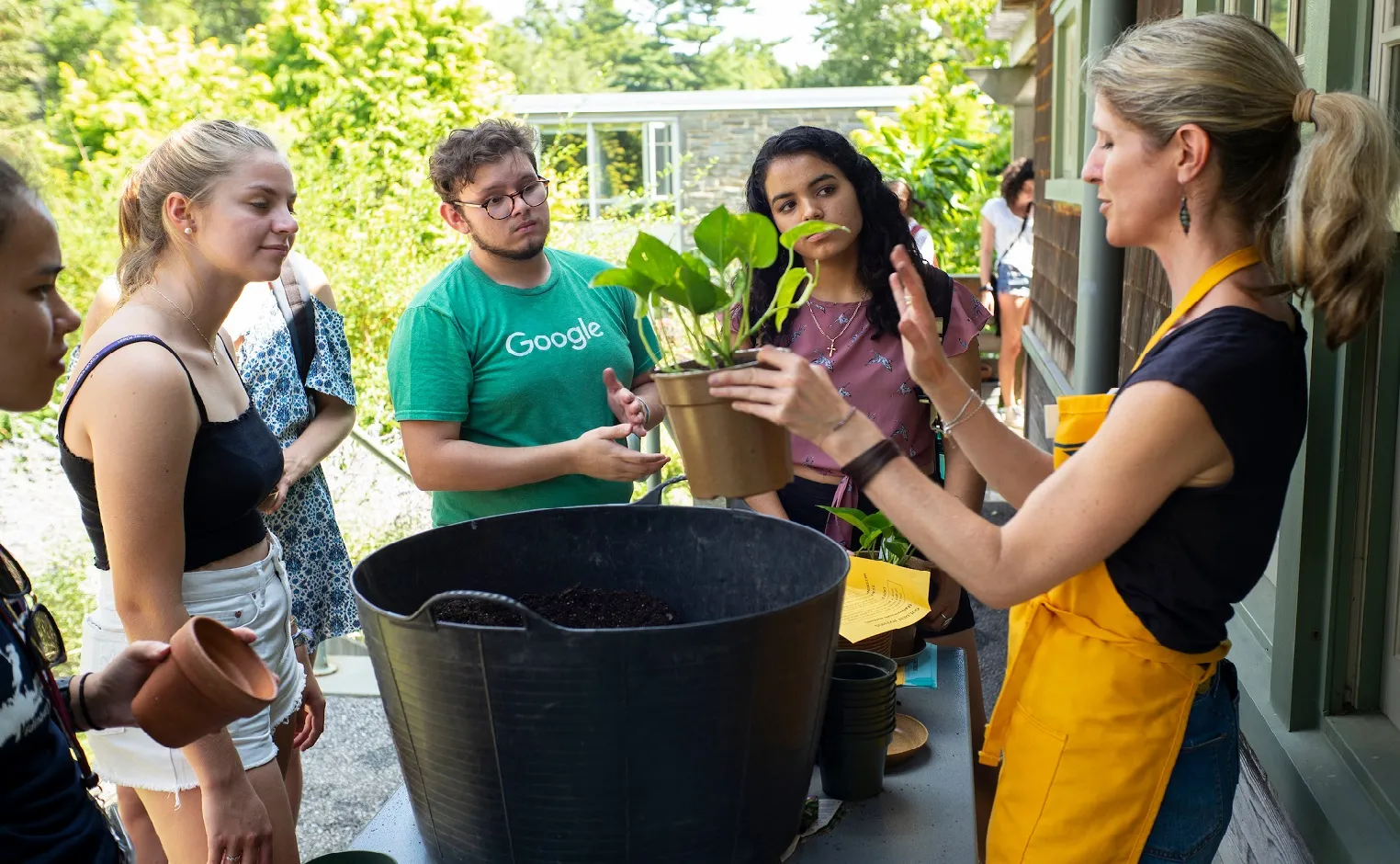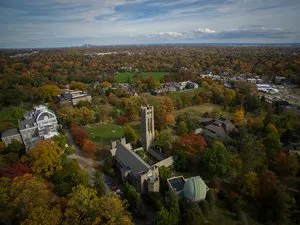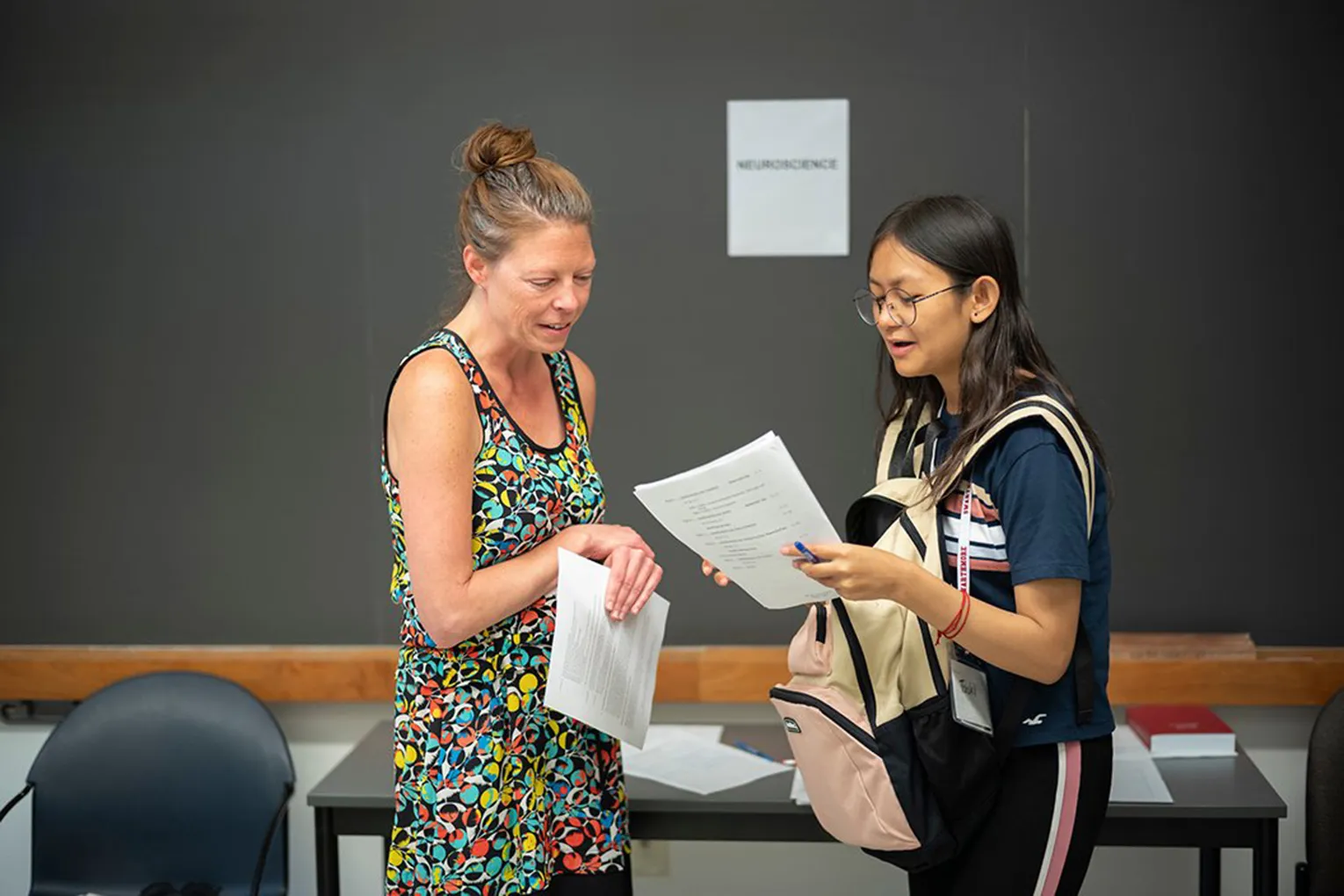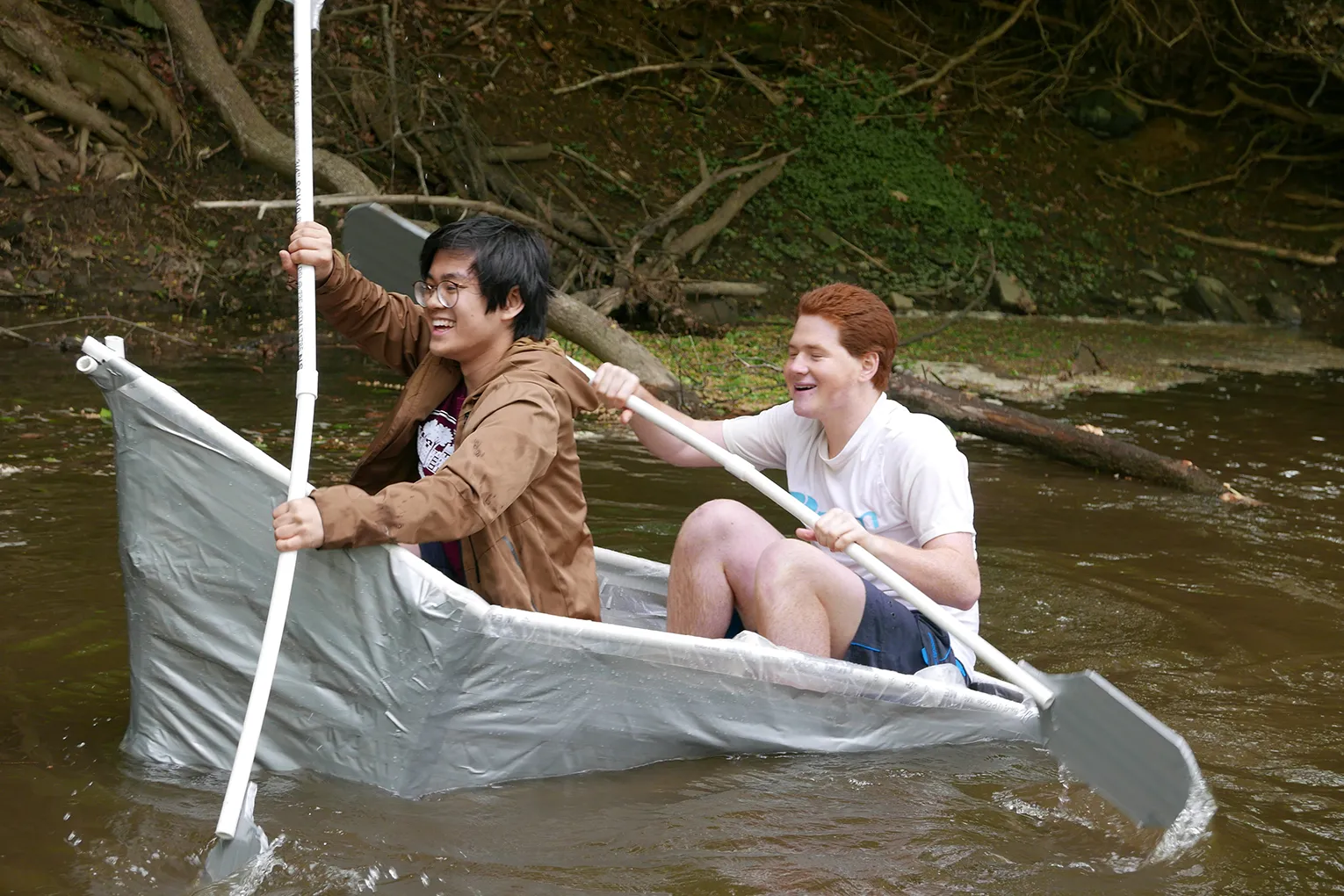- Climate Justice
In 2010, then-President Rebecca Chopp signed the American College & University Presidents' Climate Commitment (now the Carbon Leadership Commitment), joining the leaders of institutions of higher education across the country in accelerating educational and operational efforts to address climate change. As a result of this pledge, the College has set 2035 as a carbon neutrality target, and is actively working to decarbonize campus energy systems.
In 2015, President Valerie Smith signed the American Campuses Act on Climate Pledge hosted by the White House, outlining a series of commitments related to education and engagement, emissions reductions, buildings, and water. See the publicly released Fact Sheet and Swarthmore's Pledge [pdf].
In 2017, Swarthmore committed to upholding the Paris Agreement as a signatory to the We Are Still In pledge. The College agreed to deliver concrete emission's reductions that meet America’s emissions pledge under the Paris Agreement, despite the federal government’s decision to withdraw from this international climate accord.
Most recently, in September 2019, President Smith reiterated this commitment by signing the SDG Accord Climate Emergency letter, committing the College to:
- Mobilize more resources for action-oriented climate change research and skills creation;
- Commit to going carbon neutral by 2030 or 2050 at the very latest;
- Increase the delivery of environmental and sustainability education across curriculum, campus and community outreach programs.
More information about Swarthmore's climate justice efforts can be found here.
- Zero Waste
Swarthmore is committed to becoming a Zero Waste campus, diverting waste from the nearby incinerator through upstream waste reduction as well as composting and recycling. Since 2016, we have undertaken a substantial effort to increase our reduction and diversion efforts, overseen by the multi-departmental Zero Waste Working Group. Each year, students in the President’s Sustainability Research Fellowship program and Green Advisor program contribute to this work. Learn more about Swarthmore’s zero waste efforts here.
- Sustainable Building
Swarthmore is committed to building and operating innovative, sustainable, and healthy spaces to learn, work, and live. In 2015, the College published the Environmental Sustainability Framework, which organizes and codifies specific sustainability goals for the landscape, buildings, and operations on campus. In 2020, Swarthmore committed to achieving carbon neutrality by 2035 through To Zero By Thirty-Five which charts a transformative path to efficient and clean energy on campus.
We are also pursuing ambitious green building standards beyond this framework for new construction projects on campus, including the Dining & Community Commons project. Read more about these efforts here.






